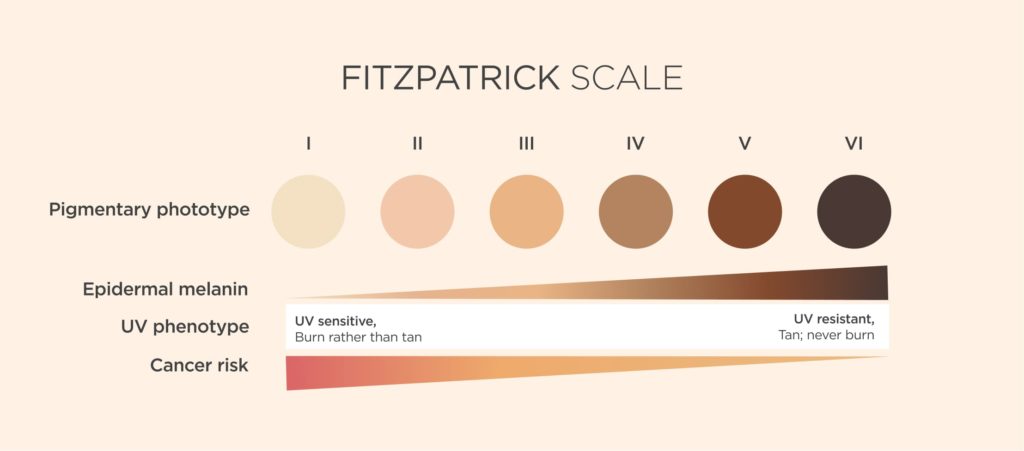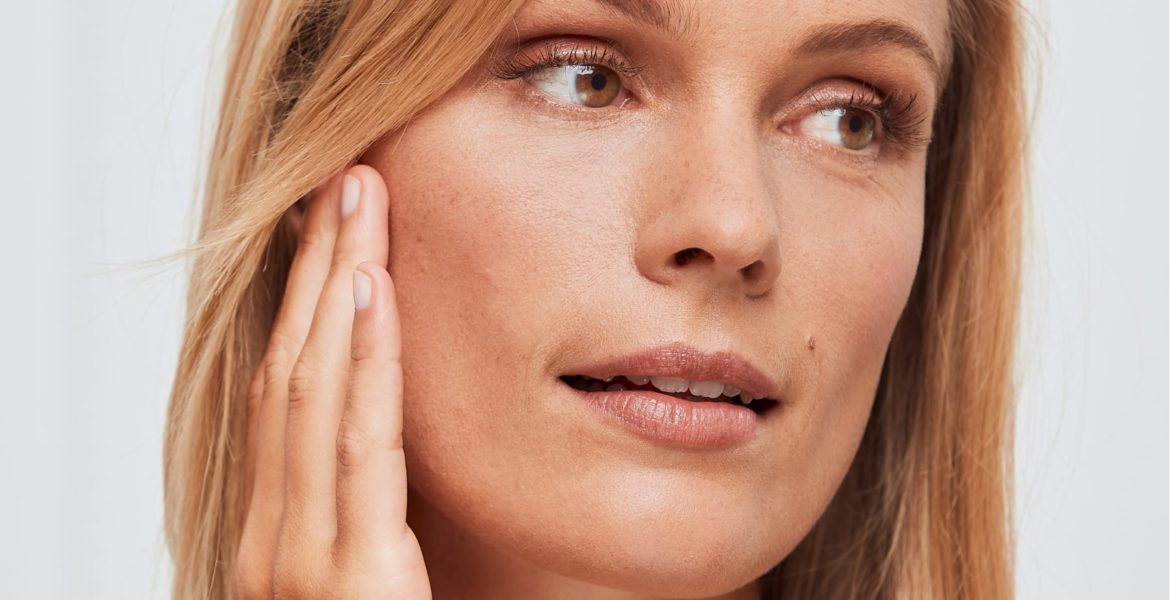It’s that time of the year again and you’ve probably landed this post after searching for answers to “how to treat dark spots” or “dark spot treatment”. You may have noticed darker spots on your face. But what exactly are they? Where have they come from? Is there a way to get rid of them?
Well, we’re here to help you understand the cause for uneven pigmentation on your skin and how to even skin tone with specific products. Before this, we’ll have to throw in a few technical terms, so you can find the cause and get even with your skin.
So, let’s see what pigmentation is, the general types of hyperpigmentation disorders, and what types of products to use for skin discoloration.
Table of Contents
What is pigmentation?
Although you have probably asked Google about hyperpigmentation or discoloration, they’re both related to the general concept of pigmentation. The definition of pigmentation can be as straightforward as “coloring”.5 In the skin, pigment cells called melanocytes, produce melanin which is a form of natural coloring.
Melanin is a protective pigment, so when you expose your skin, it reacts by producing more melanin as a defense mechanism against sun exposure. It’s produced in our epidermis, the outermost layer of skin on your body.
As with your eyes and hair, the type of melanin is what determines the color and tone of your skin. Eumelanin provides dark coloration and pheomelanin is responsible for lighter colorations.6 Contrary to what most people think, the color of your skin not only depends on the amount but on the type of melanin.
Who doesn’t like spending time outdoors? Whether it’s taking a walk or going for a morning run, your skin is exposed to UV radiation. This is why sun care products are crucial in reducing the amount of UV radiation, otherwise it could easily worsen skin pigmentation disorders leading to skin discoloration.

What is skin discoloration?
This is an umbrella term used to refer to any modified skin pigmentation. Two basic forms of skin discoloration include hyperpigmentation, where more melanin is produced and leaves darker patches of skin, and hypopigmentation, where less melanin is produced leaving lighter areas on your skin.
What causes skin hyperpigmentation?

As you’ve probably guessed by now if “hyper” means “more” and pigmentation refers to “color”, hyperpigmentation is what makes your skin darken in specific areas. This overproduction of melanin can be triggered by many things including sun exposure, hormonal changes, age, and certain drugs. Depending on the type of hyperpigmentation, the cause will be different, so let’s explore the main types.
Types of Hyperpigmentation
These skin pigmentation disorders are triggered by an abnormal overproduction of melanin. Although pigment disorders are usually considered to be an aesthetic problem, they affect quality of life. Research indicates that hyperpigmented spots have a negative impact on the patient’s quality of life, for both darker and lighter-skinned individuals.
Primary pigmentary disorders
Just like some of us are prone to developing skin conditions like acne, others tend to have skin pigmentation disorders. In primary disorders, hyperpigmentation appears without any other symptoms; for example, melasma is a very common type of primary pigmentary disorder.
It can appear as irregular tan, brown, brown-gray spots, usually on the face. Since it can be triggered by hormonal changes, it’s more common among women than men, especially during pregnancy. Oral contraceptives plus sun exposure can also contribute to developing this primary disorder. This is because contraceptives cause an increase in coloration which, if exposed to the sun, will intensify the color even further.
Need-to-knows
Risk factors: There is a link between estrogen levels and melasma, so women who are on birth control or pregnant are more likely to develop it. It can also occur in men and women that are neither pregnant nor on birth control. It can also appear on all types of skin tones, but is more common among Asian, Hispanic, and African-American skin tones.2
Since melasma is sensitive to sunlight, avoid increased or continuous exposure to the sun. If this is not possible, then make sure to use broad spectrum protection, which protects your skin from UVA and UVB rays. You also need to check that it’s dermatologist-recommended, and that it has a higher SPF, such as an SPF 50 or SPF 50+ sunscreen.
Post-inflammatory hyperpigmentation (PIH)
This disorder is caused by an inflammation or irritation on your skin, which produces more melanin.1 As it can affect deeper layers of the skin, this type of hyperpigmentation can be permanent as they are difficult to remove.
Need-to-knows
Risk factors: If you have darker skin, then it’s more likely you’ll develop PIH but it can also occur in fair-skinned people.
Since PIH lasts longer than the original irritation or inflammation, the best thing you can do is to talk to a dermatologist to treat this inflammation or irritation early on.
Sun-induced hyperpigmentation
Although everyone loves to be outdoors under the sun, it also has the ability to wrinkle your skin and result in disorders such as skin discoloration.
Need-to-knows
Risk factors: Although the risk factor here seems obvious, we can all be affected by UV radiation in different ways. In 1975, the Fitzpatrick Skin Phototypes (FSP) were developed to classify skin coloring and response to ultraviolet (UV) radiation. For example, Type I phototype – corresponding to pale skin, blue eyes, and light colored hair – are more sensitive to UV radiation.3

There is no one way on how to treat hyperpigmentation or skin discoloration. This will depend on your skin type, the cause for hyperpigmentation, as well as any other skin condition that you may have. This is why it’s important to always check with a professional, especially in more severe cases of skin pigmentation disorder.
When should I worry about skin discoloration?
First off, if it’s become a great concern you should seek professional help. For example, if you spot any new discolored areas in your skin or existing moles change in form or color, you shouldn’t think twice and see a doctor.
However, in some cases it may be a simple discolored patch of skin. In these cases, you can opt for an over-the-counter skin care routine for dark spots or skin discoloration products for your face.
How to treat dark spots on your face
Can you treat dark spots on your face? To put it simply, yes. If you’re looking for an intense spot correcting treatment for all skin types, including sensitive, Melaclear Advanced could be an effective solution. Read How to Treat Dark Spots on Your Skin to understand the various causes for this type of pigmentation, how to prevent it, and how to reduce them with skincare products.
ISDIN’s new pigment-correcting serum helps reduce pronounced dark spots and uneven discoloration. It includes ingredients such as Tranexamic Acid, Niacinamide and Spot Corrector Complex, which help correct, brighten, and soothe your complexion.


Does it work? You’ll notice improvements as early as 2 weeks with progressively dramatic results at 12 weeks.
How does it work? Tranexamic Acid, a synthetic amino acid derived from lysine helps fight all kinds of spots, especially those caused by the sun. Niacinamide helps correct spots, so your skin will appear brighter and more luminous. Its hydrating effect also leaves your skin feeling moist and free from any dry areas.
How do I use it? We recommend using it in your morning and night routine. If your skin requires it, you can also include a moisturizer after. This Spot Corrector complex also promotes a keratolytic action which helps remove dead cells and renews the top layers. Don’t forget that exfoliation is key in removing dead cells and renewing the top layers that are directly exposed to UV radiation or pollution.

Don’t forget to include a high SPF sunscreen like Eryfotona Actinica or Eryfotona Ageless in your skincare routine. No matter what causes dark spots, these will be affected by UV radiation. For example, you can apply sunscreen right before applying makeup and 15 minutes before sun exposure so you give your skin time to absorb it. If you’re going to be exposed to the sun for a long period, re-apply every two hours; if you plan on doing exercise, you should apply with more frequency.
References and sources:
1 Davis, E. C., & Callender, V. D. (2010). Postinflammatory hyperpigmentation: a review of the epidemiology, clinical features, and treatment options in skin of color. The Journal of clinical and aesthetic dermatology, 3(7), 20–31. Retrieved 10 of October, 2022, from https://pubmed.ncbi.nlm.nih.gov/20725554/
2 Handel, A. C., Miot, L. D., & Miot, H. A. (2014). Melasma: a clinical and epidemiological review. Anais brasileiros de dermatologia, 89(5), 771–782. https://doi.org/10.1590/abd1806-4841.20143063
3 Hönigsmann H, Stingl G (eds): Therapeutic Photomedicine. Clinically Oriented Symposium, Organized by the European Society for Dermatological Research, Baden/Vienna, February 1985. Curr Probl Dermatol. Basel, Karger, 1986, vol 15, pp 25-38. doi: 10.1159/000412090. Retrieved 10 of October, 2022, from https://www.karger.com/Article/Abstract/412090#
4 Kaufman, B.P., Aman, T. & Alexis, A.F. Postinflammatory Hyperpigmentation: Epidemiology, Clinical Presentation, Pathogenesis and Treatment. Am J Clin Dermatol 19, 489–503 (2018). https://doi.org/10.1007/s40257-017-0333-6
5 MedlinePlus. (2018, June 26). Skin Pigmentation Disorders | Hyperpigmentation. MedlinePlus. Retrieved October 11, 2022, from https://medlineplus.gov/skinpigmentationdisorders.html
6 Frudakis, T. N. (2008). Direct Method of Phenotype Inference. Molecular Photofitting. https://www.sciencedirect.com/topics/chemistry/eumelanin





